- About
- News
- Faculty
-
Academics
- School of Physical Science and Technology (SPST)
- School of Life Science and Technology (SLST)
- School of Information Science and Technology (SIST)
- School of Entrepreneurship and Management (SEM)
- School of Creativity and Art (SCA)
- Institute of Humanities (IH)
- School of Biomedical Engineering (BME)
- Shanghai Institute for Advanced Immunochemical Studies (SIAIS)
- iHuman Institute
- Institute of Mathematical Sciences (IMS)
- Center for Transformative Science (CTS)
- Institute of Carbon Neutrality (ICN)
- Shanghai Clinical Research and Trial Center
- Tech Transfer
- Global
- Campus Life
-
 Professor Song Fu’s research group from the School of Information Science and Technology (SIST) has recently published an article entitled “A Hybrid Approach to Formal Verification of Higher-Order Masked Arithmetic Programs”. This article was published in ACM Transactions on Software Engineering Methodology (ACM TOSEM), one of the two most prestigious software engineering journal...
Professor Song Fu’s research group from the School of Information Science and Technology (SIST) has recently published an article entitled “A Hybrid Approach to Formal Verification of Higher-Order Masked Arithmetic Programs”. This article was published in ACM Transactions on Software Engineering Methodology (ACM TOSEM), one of the two most prestigious software engineering journal... -
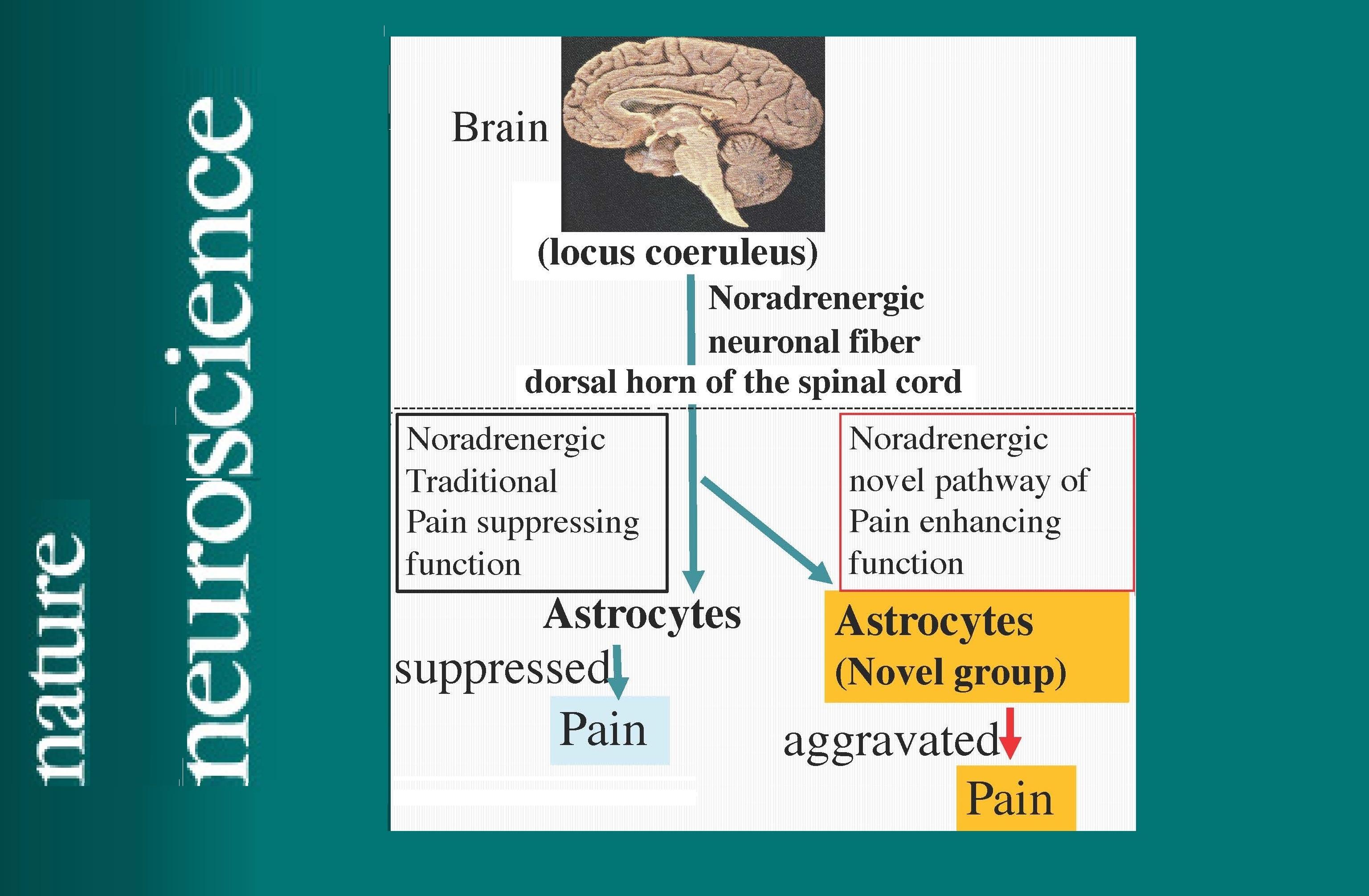 Professor Katsuhiko Mikoshiba from the School of Life Science and Technology (SLST) and SIAIS, in collaboration with Professor Makoto Tsuda’s group in Kyushu University, have published research findings in Nature Neuroscience describing a novel type of astrocyte involved in pain regulation: Noradrenergic stimulation aggravates pain through the novel astrocytes, opposite to the classical...
Professor Katsuhiko Mikoshiba from the School of Life Science and Technology (SLST) and SIAIS, in collaboration with Professor Makoto Tsuda’s group in Kyushu University, have published research findings in Nature Neuroscience describing a novel type of astrocyte involved in pain regulation: Noradrenergic stimulation aggravates pain through the novel astrocytes, opposite to the classical... -
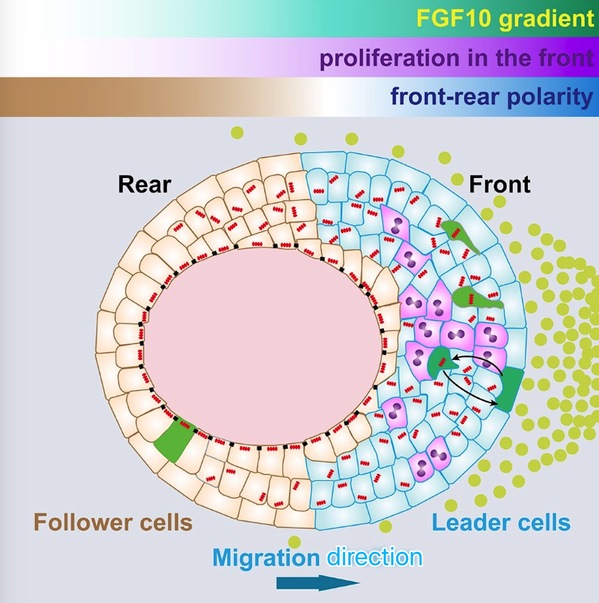 A team of scientists led by Professor Lu Pengfei from SLST has discovered a novel multi-step mechanism by which vertebrate epithelium undergoes collective migration. On October 13, 2020 (Beijing time), their work was published online as a research article entitled, Asymmetric stratification-induced polarity loss and coordinated individual cell movements drive directional migration of vertebrate ep...
A team of scientists led by Professor Lu Pengfei from SLST has discovered a novel multi-step mechanism by which vertebrate epithelium undergoes collective migration. On October 13, 2020 (Beijing time), their work was published online as a research article entitled, Asymmetric stratification-induced polarity loss and coordinated individual cell movements drive directional migration of vertebrate ep... -
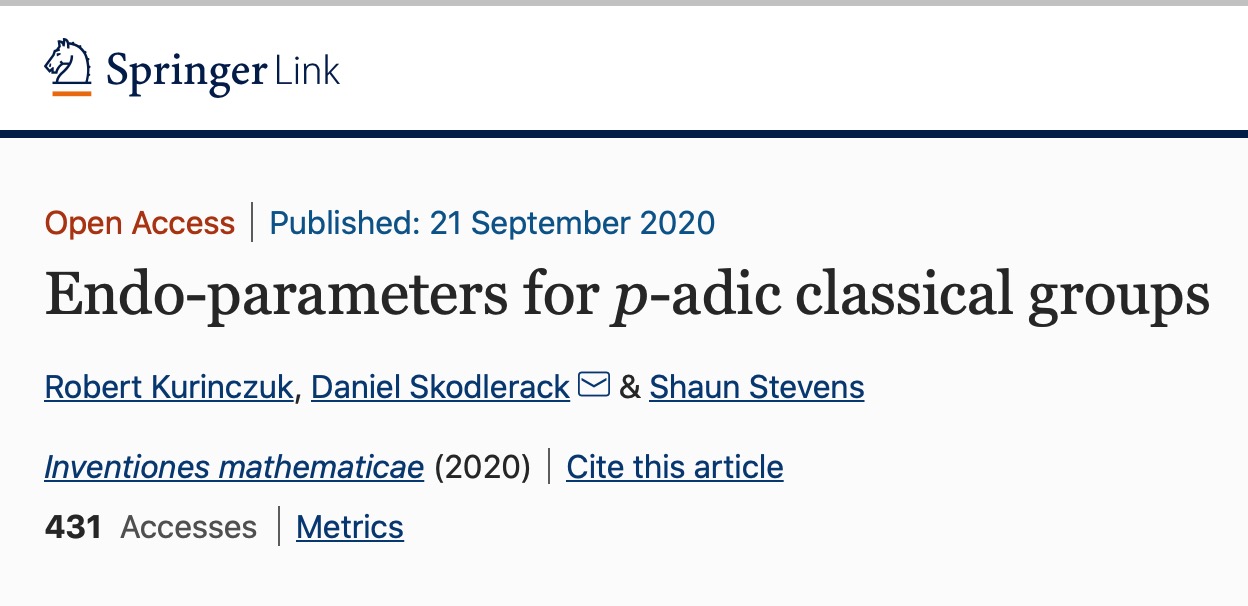 Recently, a research article entitled “Endo-parameters for p-adic classical groups” by Dr. Daniel Skodlerack from the Institute of Mathematical Sciences was published in Inventiones Mathematicae,one of the four most prestigious mathematics journals in the world. The article, completed in collaboration with Dr. Robert Kurinczuk of the Imperial College London and Dr. Shaun Stevens of the Univ...
Recently, a research article entitled “Endo-parameters for p-adic classical groups” by Dr. Daniel Skodlerack from the Institute of Mathematical Sciences was published in Inventiones Mathematicae,one of the four most prestigious mathematics journals in the world. The article, completed in collaboration with Dr. Robert Kurinczuk of the Imperial College London and Dr. Shaun Stevens of the Univ... -
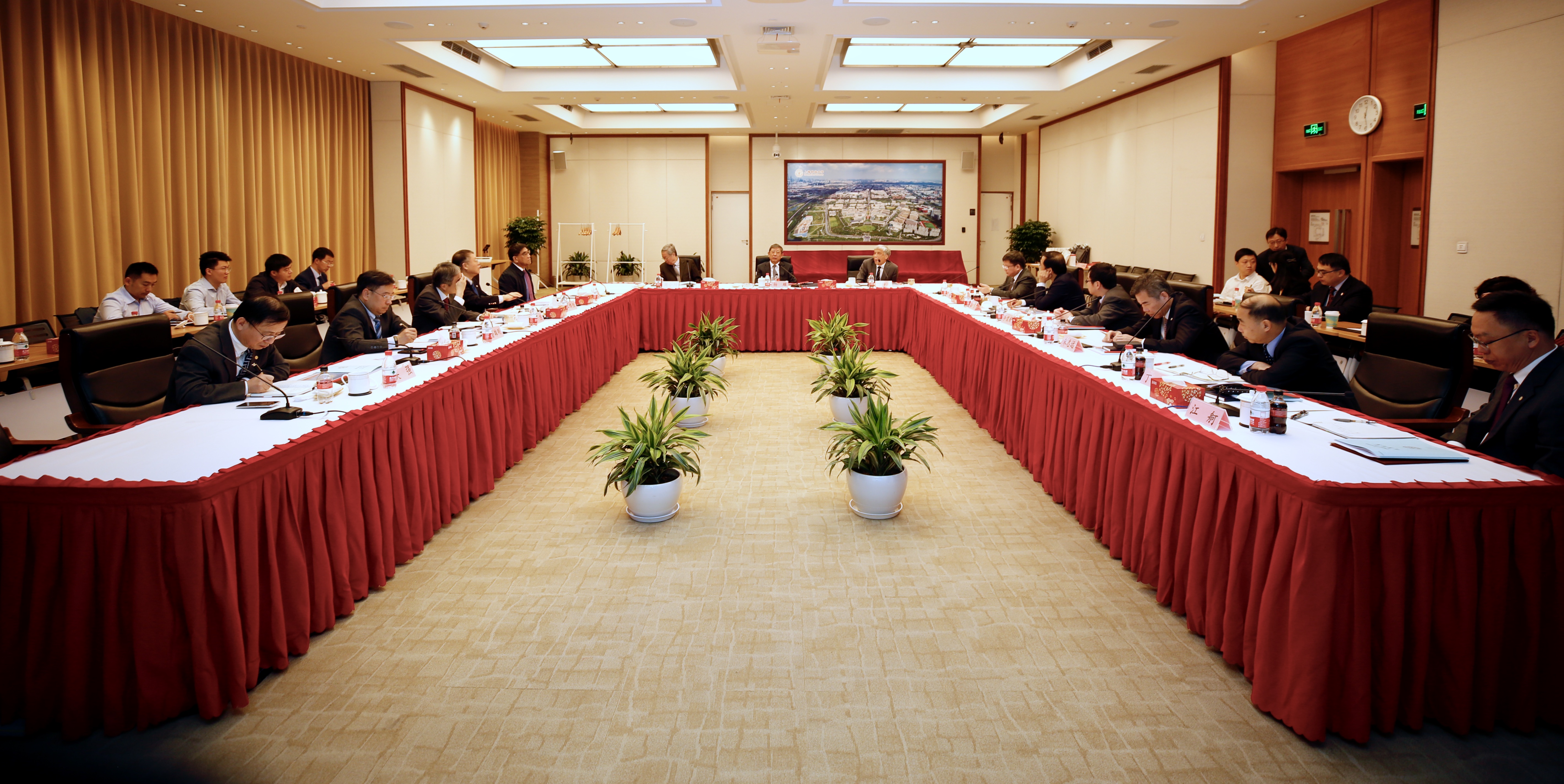 On October 9th, ShanghaiTech University held the Third Session of the Second University Governing Board. Yang Xiong, Chairman of the University Governing Board, host the session. Members of the University Governing Board, Ding Zhongli, Chen Qun, Zhou Xiaochuan, Fu Chengyu, Zhang Jie, Jiang Mianheng and Li Ruxing attended the session. Yin Jie, Zhu Zhiyuan, Lu Xionggang, Ding Hao and Wu Qi...
On October 9th, ShanghaiTech University held the Third Session of the Second University Governing Board. Yang Xiong, Chairman of the University Governing Board, host the session. Members of the University Governing Board, Ding Zhongli, Chen Qun, Zhou Xiaochuan, Fu Chengyu, Zhang Jie, Jiang Mianheng and Li Ruxing attended the session. Yin Jie, Zhu Zhiyuan, Lu Xionggang, Ding Hao and Wu Qi... -
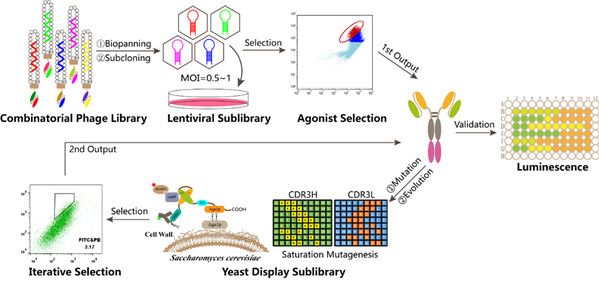 Since developed in 1980s by Prof. Richard Lerner and Prof. Gregory Winter, 2018 Nobel Laureate in Chemistry, combinatorial antibody library technology has been applied in biomedical development and basic science research, etc. Prof. Richard Lerner extended the application of combinatorial antibody to many fields, such as enzyme catalysis, receptor activation and cell fate regulators...
Since developed in 1980s by Prof. Richard Lerner and Prof. Gregory Winter, 2018 Nobel Laureate in Chemistry, combinatorial antibody library technology has been applied in biomedical development and basic science research, etc. Prof. Richard Lerner extended the application of combinatorial antibody to many fields, such as enzyme catalysis, receptor activation and cell fate regulators... -
 iHuman Institute Distinguished Professor Dr. Kurt Hermann Wüthrich, Nobel Laureate in Chemistry, was honored with the 2020 Magnolia Award in recognition of his great contributions and achievements in scientific research, and for nurturing and mentoring Chinese young scientists.The Magnolia Award, which has been awarded annually since 1989, was established to commend...
iHuman Institute Distinguished Professor Dr. Kurt Hermann Wüthrich, Nobel Laureate in Chemistry, was honored with the 2020 Magnolia Award in recognition of his great contributions and achievements in scientific research, and for nurturing and mentoring Chinese young scientists.The Magnolia Award, which has been awarded annually since 1989, was established to commend... -
 Professor Katsuhiko Mikoshiba from SIAIS, with the French Professor Valentin Nägerl’s group unraveled the morphological mystery of astrocytes. Misa Arizono, a former PhD student in Mikoshiba’s lab is the first author of this report in Nature Communications 2020.Astrocytes, which are the most numerous...
Professor Katsuhiko Mikoshiba from SIAIS, with the French Professor Valentin Nägerl’s group unraveled the morphological mystery of astrocytes. Misa Arizono, a former PhD student in Mikoshiba’s lab is the first author of this report in Nature Communications 2020.Astrocytes, which are the most numerous... -
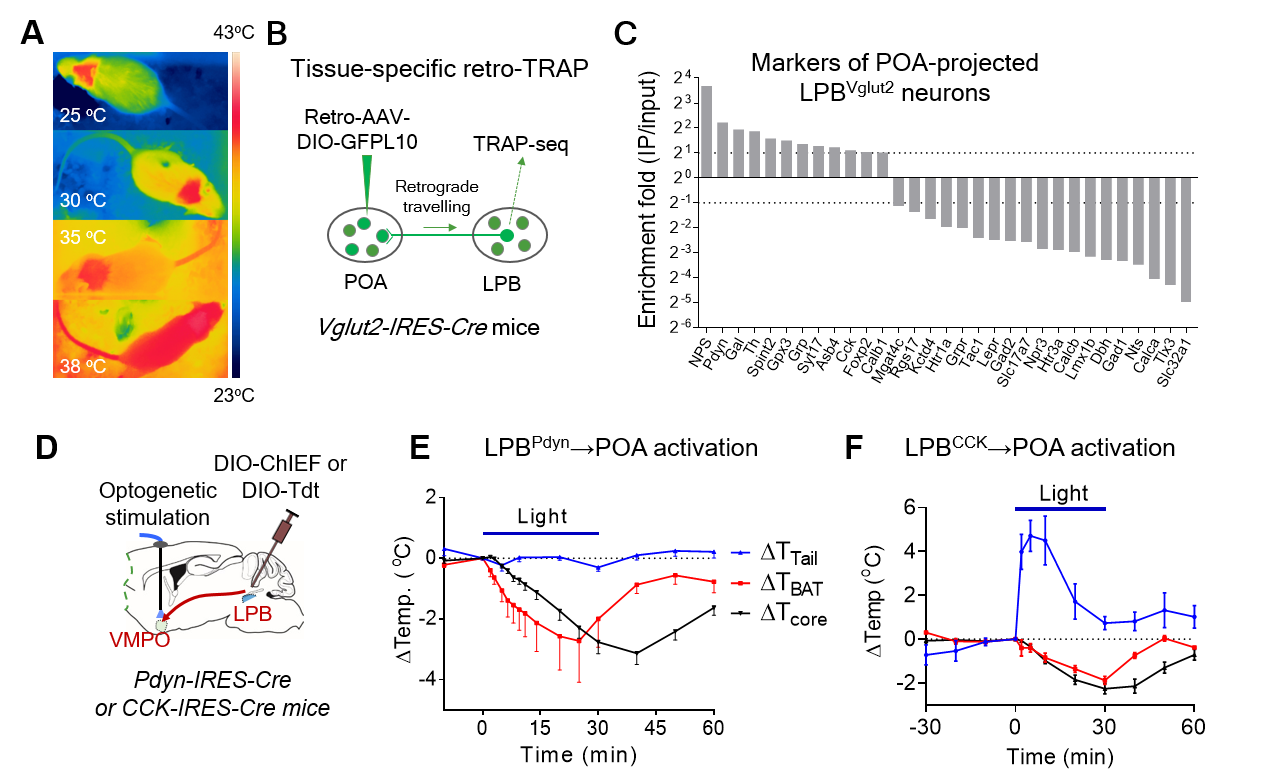 On September 2nd 2020, Professor Shen Wei from SLST with his collaborators published a research paper entitled “Parabrachial neuron types categorically encode thermoregulation variables during heat defense”, in the international academic journal Science in Advances. This paper defined two key elements of the lateral parabrachial nucleus (LPB)-hypothalamic preoptic area (POA) circu...
On September 2nd 2020, Professor Shen Wei from SLST with his collaborators published a research paper entitled “Parabrachial neuron types categorically encode thermoregulation variables during heat defense”, in the international academic journal Science in Advances. This paper defined two key elements of the lateral parabrachial nucleus (LPB)-hypothalamic preoptic area (POA) circu... -
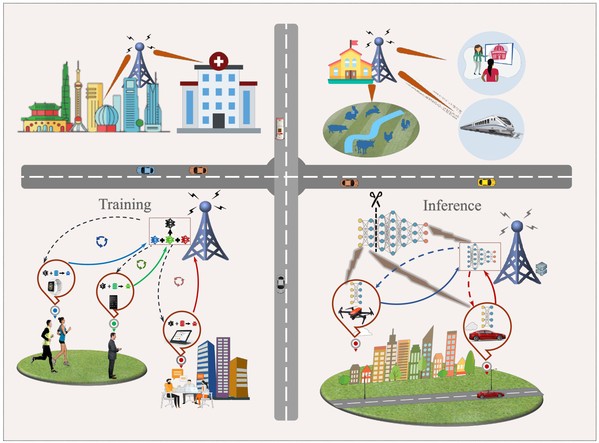 Prof. Shi Yuanming’s research group and collaborators from HKUST and HKPolyU have surveyed the key techniques for improving the communication efficiency of performing artificial intelligence (AI) training and inference tasks at network edges, a.k.a., edge AI. Edge AI is envisioned to promote the paradigm shift of futuristic 6G networks from “connected things” to “connected inte...
Prof. Shi Yuanming’s research group and collaborators from HKUST and HKPolyU have surveyed the key techniques for improving the communication efficiency of performing artificial intelligence (AI) training and inference tasks at network edges, a.k.a., edge AI. Edge AI is envisioned to promote the paradigm shift of futuristic 6G networks from “connected things” to “connected inte... -
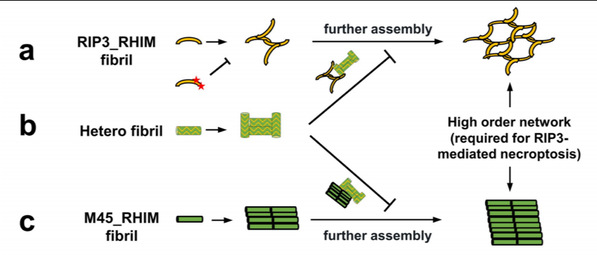 Recently, two groups from the School of Life Science and Technology (SLST) at ShanghaiTech University, led by Prof. Wang Huayi and Prof. Lu Junxia, published a research article entitled “RIP3-mediated necroptosis is regulated by inter-filament assembly of RIP homotypic interaction motif” in Cell Death & Differentiation. Necroptosis is a type of programmed necrosis induced by ...
Recently, two groups from the School of Life Science and Technology (SLST) at ShanghaiTech University, led by Prof. Wang Huayi and Prof. Lu Junxia, published a research article entitled “RIP3-mediated necroptosis is regulated by inter-filament assembly of RIP homotypic interaction motif” in Cell Death & Differentiation. Necroptosis is a type of programmed necrosis induced by ... -
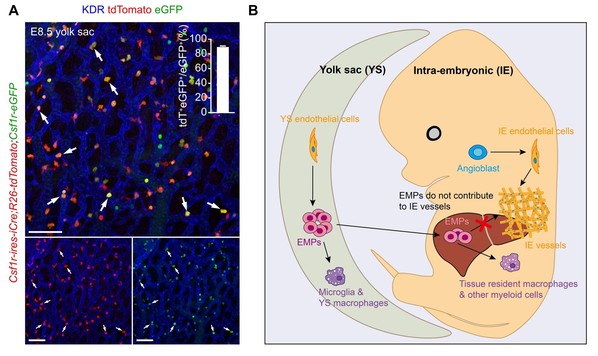 A research team led by Professor Zhang Hui from School of Life Science and Technology (SLST) at ShanghaiTech University has demonstrated that erythro-myeloid progenitors (EMPs) are the origin of resident macrophages in multiple organs, but not the origin of intraembryonic vascular endothelial cells. The team has written an article entitled “No Evidence for Erythro-Myeloid Progenitor-Derived Vascu...
A research team led by Professor Zhang Hui from School of Life Science and Technology (SLST) at ShanghaiTech University has demonstrated that erythro-myeloid progenitors (EMPs) are the origin of resident macrophages in multiple organs, but not the origin of intraembryonic vascular endothelial cells. The team has written an article entitled “No Evidence for Erythro-Myeloid Progenitor-Derived Vascu... -
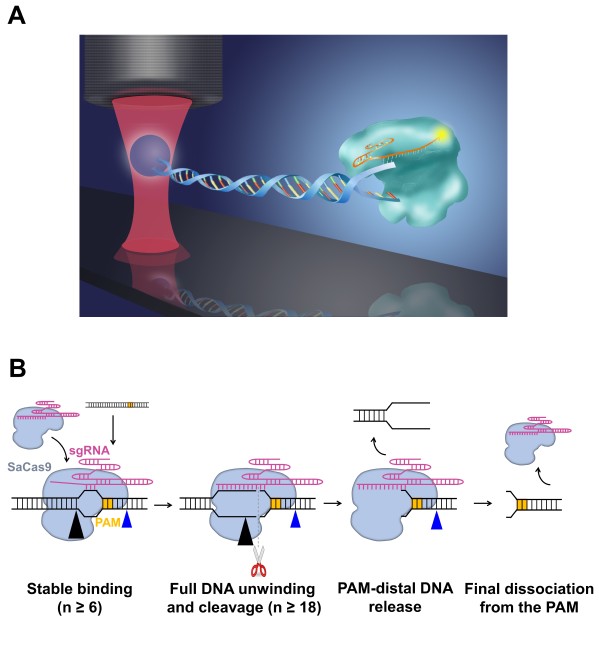 A research team led by Professor Sun Bo from SLST has systemically investigated the molecular mechanism governing DNA binding, unwinding and cleavage by SaCas9. They provided a detailed dynamic understanding of SaCas9 in DNA target association and dissociation. In addition, two stable interactions between SaCas9 and DNA governing their interplay have been identified. On August 13, this study ...
A research team led by Professor Sun Bo from SLST has systemically investigated the molecular mechanism governing DNA binding, unwinding and cleavage by SaCas9. They provided a detailed dynamic understanding of SaCas9 in DNA target association and dissociation. In addition, two stable interactions between SaCas9 and DNA governing their interplay have been identified. On August 13, this study ... -
 At 11 PM (Beijing Time) on 8th July, a new research finding was reported by the joint research team led by Prof. Rao Zihe, Distinguished Adjunct Professor at Shanghai Institute for Advanced Immunochemical Studies (SIAIS) and Professor Luke Guddat (Visiting Professor at SIAIS and Professor at University of Queensland). The related research article entitled “Structures of fungal...
At 11 PM (Beijing Time) on 8th July, a new research finding was reported by the joint research team led by Prof. Rao Zihe, Distinguished Adjunct Professor at Shanghai Institute for Advanced Immunochemical Studies (SIAIS) and Professor Luke Guddat (Visiting Professor at SIAIS and Professor at University of Queensland). The related research article entitled “Structures of fungal...
- per page 14 records total 729 records
- firstpage <<previouspage nextpage>> endpage
- PageNumber 28/53 jumpto

